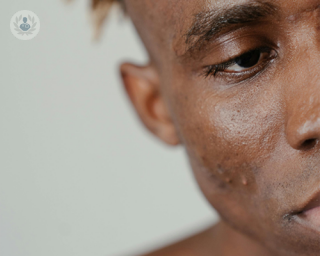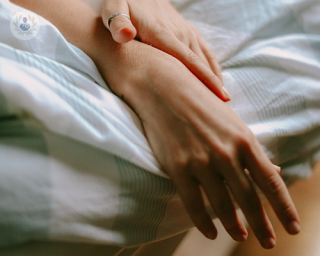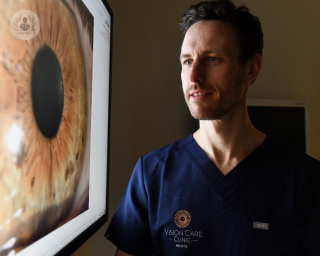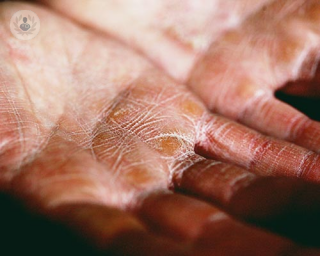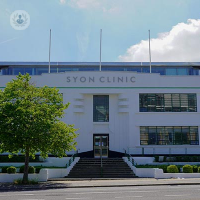Eczema
What is eczema?
Eczema, also known as dermatitis, encompasses a group of skin conditions that typically cause a rash and itching. In most cases, the skin goes red, rough, dry, itchy, and may peel or even form blisters. However, eczema can present in many ways, affecting any part of the body.
How much of the body is affected does not necessarily correlate with how severe it is, as certain sites, such as the face, the hands and the genitals, may have a large impact on quality of life and function. Eczema can be divided into several types, the most common being atopic eczema.
This image demonstrates the range of presentations of severe eczema in different skin types:

What is atopic eczema?
Atopic eczema is the most common inflammatory skin disease in the world. It is characterised by the presence of dryness, itching, and a rash, often located in the creases of the elbows and the knees, although it is not uncommon to appear in other places, such as the hands. Babies commonly also develop atopic eczema on their scalp or their cheeks.
“Atopic” refers to a group of allergic conditions, namely asthma and hay fever, that have a genetic link with eczema. They often occur together in the same individual.
What is allergic contact eczema?
Allergic contact eczema can present in a similar way to atopic eczema. However, rather than being genetically programmed, it is caused by direct or indirect skin contact with something in a person's environment. It can present within a few days of exposure with the usual scaly dry patches, but also blisters and hives.
Food allergy is a different entity to allergic contact eczema.
What are the symptoms of eczema?
Almost all cases of eczema feature the following symptoms:
- dryness and flaking
- itching
- rash
In the case of atopic eczema, the following can also occur:
- the skin affected by the rash may appear lighter or darker
- the skin can become broken, bleed, and get infected
- the skin can become thickened from long-term rubbing and scratching
- the skin can fissure or split like a papercut, especially around the fingers
There are other forms of eczema, such as nummular (discoid) eczema and stasis (asteatotic) eczema, which may cause other symptoms, such as round patches of scaly skin (discoid) in the former, or swelling in the legs (stasis) in the latter.
What is the main cause of eczema?
This question has a complex answer, but ultimately, eczema is caused by a combination of your genetic makeup and environmental factors.
If you personally have asthma or hay fever or have first-degree relatives with these or eczema, you are more likely to get eczema. Environmental factors include contact with irritants, allergens, infections, and stress.
Can eczema be cured?
Unfortunately, eczema cannot be cured, but it can certainly be controlled. Most children with eczema "grow out of it" by their teenage years. However, these patients will likely be prone to dry skin, and have a tendency to eczema if they are exposed to the triggers outlined above or if they do not moisturise their skin adequately.
What is the treatment for eczema?
When considering treatment, I think it is useful to think of your skin as a brick wall. In eczema, you lack an important ingredient in the cement that holds your skin cells together, and this makes the skin leaky. So, water leaks out, making your skin dry. Allergens, irritants and infections can leak in, causing inflammation, redness and itching in the skin.
Firstly, all patients need a moisturiser, which is applied regularly to replace the hydrating factors missing in the cement of your skin. Most also need an anti-inflammatory cream or ointment. The most common of these are steroid creams or ointments. However, steroids are not the only option, as there is another class of anti-inflammatory creams and ointments that we use, called calcineurin inhibitors.
We sometimes use antibiotics and antiseptic washes for patients who are prone to infection. Antihistamines can help some patients in addition to the above therapies, but they do not treat the inflammation in eczema, therefore the root cause is not addressed. I do not find them particularly helpful unless the patient has another reason to take them, for example, for their hay fever.
If the eczema is not controlled with topical treatments, then we can use phototherapy (which is ultraviolet light delivered to the skin), and even tablet or injectable therapies for more severe cases.
I would also say that many patients can benefit from psychological support, as we fully appreciate the impact that eczema can have on a person's mental wellbeing.

